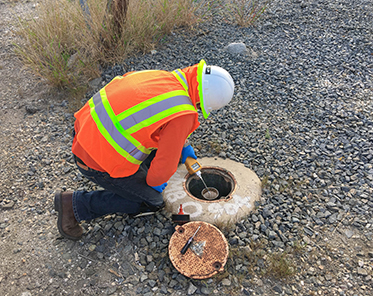Environmental: Due-Diligence Property Transfer

As part of the due-diligence, all commercial property buyers should conduct an environmental assessment. The reasons for such a study include:
- Evaluate whether Recognized Environmental Conditions (RECs) exist
- Often lender-required
- Establish “Innocent Land Owner” defense (CERCLA)
- Improve quality of portfolios (REITs, Other Investors)
- Estimate cleanup costs to factor into purchase agreements and development plans
Due-Diligence assessments typically consist of Phase I assessments, which may be followed by Phase II assessments, as described below.

Phase I Environmental Site Assessments (ESAs)
Phase I ESAs are routinely performed as part of ownership transfers, new mortgages, or loan refinances for commercial properties. In addition, a Phase I ESA is required to be conducted on Brownfield sites that are receiving Federal funding. The scope of services for a Phase I ESA is consistent with the American Society for Testing and Materials (ASTM) No. E1527, and the USEPA All Appropriate Inquiry (AAI) standards.
Phase I ESAs typically involve a review of: lease and title records and available maps and environmental reports for the site(s); federal, state, and local regulatory agency databases for the site and for properties located within a specified radius; reasonably ascertainable local regulatory agency files for the site(s) and adjacent properties; and reasonably ascertainable historical documents, including aerial photographs and topographic maps. Interviews with site representatives regarding the environmental status of the site may be conducted as well as a site reconnaissance to document potential hazardous materials handling, storage, and disposal practices. Findings are evaluated, mitigation measures may be provided, and a Phase I ESA report documenting findings and providing opinions and recommendations may be prepared.
Phase II Environmental Site Assessments (ESAs)
Phase II ESAs are performed to evaluate the possible presence, nature, and extent of suspected contaminants in soil and/or groundwater that may be discovered through the performance of a Phase I ESA. The scope of work is typically presented as a Work Plan that may require regulatory agency approval prior to implementation. Field data collection typically consists of soil, groundwater or soil vapor sampling which is accomplished by drilling, trenching, soil vapor surveys, groundwater well installation, and other techniques. Oftentimes geophysical techniques are used to help in understanding the subsurface conditions for targeting sampling efforts. Mobile analytical testing laboratories may be used in order to provide quick turnaround analytical data in the field. All investigations which involve the collection and interpretation of subsurface information are performed under the direction of appropriately licensed and experienced Ninyo & Moore Professional Engineers and Geologists.


